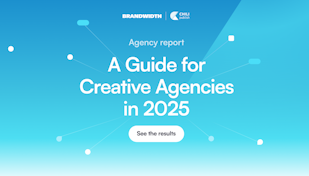This month, the platforms turned creative into infrastructure

The meeting started like so many others: a global launch, eight markets, dozens of retail partners. The slides looked sharp, the strategy was solid, the budget approved.
Then someone asked the most dangerous question in modern marketing:
“Do we have all the specs?”
Silence. Then panic.
Amazon wanted 1000×1000 product images with a white background. Walmart required 970×250 banners and 300×250 tiles. Carrefour had its own set of sponsored tiles, slightly different from Tesco’s. Zalando needed 1200×300 brand banners. And each of them wanted different headline limits, file types, and character counts.
By the time the campaign manager tallied it up, what looked like one launch had exploded into over 200 distinct creative versions. Each needed to be built, QA’d, and delivered on time.
That’s the retail media tax nobody budgets for. Not the media spend, but the production overhead that multiplies the moment you go multi-market.
From creative assets to creative inputs
That team thought they were running a campaign. In reality, they were supplying inputs to systems they don’t control. Amazon, Walmart, Carrefour — each has defined the specs, locked the templates, and left brand teams with little room for interpretation.
Creative isn’t your art file anymore. It’s an ingredient in someone else’s machine.
This month made that painfully clear. Amazon tightened its Sponsored Brand formats. Walmart Connect pushed new in-grid tiles. Carrefour rolled out updated banner requirements. And across the Atlantic, Tesco refreshed specs for grocery search placements.
None of these changes made headlines. But together, they mark a turning point: creative has been demoted from “owned asset” to infrastructure — a set of rules you comply with, or you don’t show up.
A quiet revolution on every platform
While retailers were busy reshuffling specs, the ad giants were doing something just as radical.
- Meta introduced new AI tools that scan your ad creative before it even runs. Instead of waiting for performance data, Meta predicts whether your creative will work — and quietly nudges you to follow its rules.
- Google expanded responsive Display formats. Instead of uploading one banner, you now upload components: headlines, images, calls-to-action. Google decides the combinations and placements.
- TikTok started testing auto-generated captions and edits. Your video might not even run the way you produced it. TikTok’s algorithm trims, rearranges, and pairs it with trending audio.
- YouTube kept pushing Shorts, which means brands have to make vertical video even if their teams are built around 16:9 workflows.
Each platform presents these changes as improvements. Less work, more automation, better performance. And yes, in isolation, each feature looks helpful.
But zoom out, and a different picture emerges: the platforms aren’t waiting for your designers anymore. They’re building systems that take your components and assemble the creative themselves.
Creative has slipped out of your hands.
The hidden tax
Here’s the irony: the more “responsive” and “automated” formats arrive, the more work brand teams face.
Every automation multiplies the inputs you must manage. A single campaign requires:
- multiple headline variations,
- multiple product image sets,
- metadata feeds,
- localized language versions,
- platform-specific crops and aspect ratios.
And because every platform enforces its own rules, you can’t standardize easily. What fits Google doesn’t fit Amazon. What works on TikTok won’t be accepted on LinkedIn.
The result? Teams spend weeks not creating, but reformatting. Agencies add more project managers to herd the specs. Budgets balloon. And the speed of marketing slows, even as spend accelerates.
That’s the tax. It’s not listed in your media plan, but it’s paid every day in production hours, last-minute fixes, and rejected files.
The retail media explosion
Nowhere is this tax more visible than in retail media.
Retail media ad spend is expected to top $140 billion globally in 2025. Every retailer with a website or an app wants to sell ads. For brands, that means every retailer now comes with its own set of formats.
- Amazon demands square images, white backgrounds, and headline limits.
- Walmart’s Connect platform insists on a mix of tiles and banners.
- Carrefour and Tesco roll out their own sponsored placement sizes.
- Zalando pushes banners tailored for fashion.
Each format looks small, but when you multiply across markets, you end up with hundreds of creative versions for what should have been one campaign.
I’ve seen teams spend more time aligning on Carrefour’s tile specs than debating strategy. That’s not marketing. That’s compliance.
The old way: more tools
Traditionally, the answer to complexity was another tool.
- A DAM to store assets.
- A social scheduler.
- A feed manager.
- A retail media vendor.
- A template system for print.
- A production partner for video.
Each tool solved a piece of the puzzle. But the puzzle kept getting bigger, and the pieces didn’t fit together.
Marketers now juggle ten logins, ten workflows, and ten sets of training. The irony is brutal: the tools designed to save time often end up fragmenting the work even more.
The reality: creative is infrastructure
What’s happening across retail, social, display, and video isn’t just a set of updates. It’s a structural change.
Creative is no longer a finished output. It’s infrastructure. It’s governed by specs, templates, and data rules. It’s processed by machines before it’s ever seen by a human.
That’s why mistakes hurt so badly. A missing bleed in print costs €50,000 in reprints. A wrong file type on Amazon means your product doesn’t appear during Prime Day. A cropped headline on Facebook kills click-through rates.
Specs aren’t marketing trivia. They’re operational infrastructure. And right now, most brands are treating infrastructure like a manual task list.
The future: one creative supply chain
Here’s the uncomfortable truth: more tools won’t save you.
The only way forward is to treat creative like supply chain. One system that:
- takes in brand inputs once,
- applies the rules for every channel,
- outputs the exact spec for each placement,
- and updates automatically as platforms change.
That means print, retail media, social, display, and video aren’t separate workflows. They’re channels fed by the same core system.
The idea isn’t sexy. It’s not a shiny new feature. It’s infrastructure. But it’s the only way to keep pace with platforms that move faster than any brand team ever could.
What marketers should do now
Stop chasing specs manually. Stop adding tools every time a new platform appears.
Instead:
- Audit your workflows. Count how many hours your team spends reformatting.
- Look at your last campaign. How many versions were built? How many errors slipped through?
- Push your vendors and agencies to deliver assets as data-driven, spec-ready components.
- Start building a supply chain approach, even if it begins with one channel.
Because the platforms already treat creative as infrastructure. If you don’t, you’re fighting a battle you can’t win.
Closing thought
This month wasn’t about one big announcement. It was about dozens of small shifts that, taken together, signal the end of an era.
Creative is no longer a craft file you control. It’s an input in someone else’s infrastructure.
You can ignore that reality and drown in specs. Or you can build your own infrastructure — one system, one supply chain, every channel.
That’s how marketing survives the next wave of platform changes.
CEO insights
Kevin Goeminne
Sep 18, 2025


